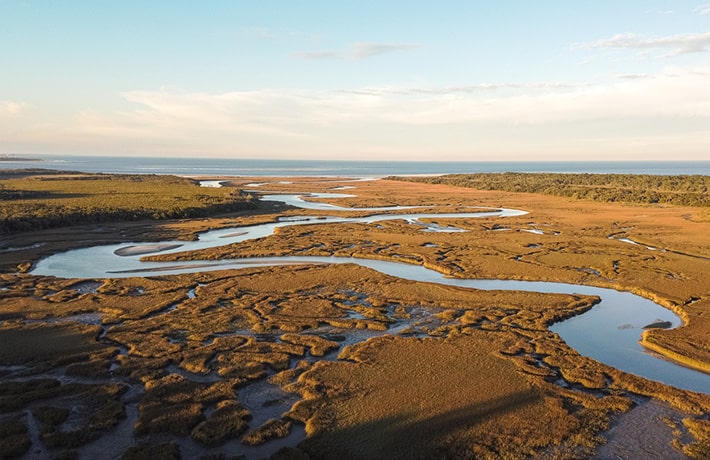What Is Habitat Conservation?
The most common definition for habitat conservation is a management practice that creates plans for preserving, protecting, and restoring habitats and is responsible for preventing species extinction, fragmentation, or reduction in range.
History of Habitat Conservation
For centuries, nature was viewed as a resource for economic gain and controlled by government rules and regulations. The 18th and 19th centuries marked the beginning of the conservationist ideology. The ideology included three core principles:
- Identifying human activities that impact the environment
- Ensuring environmental preservation for future generations
- Conducting conservation efforts responsibly
The first regulatory application of conservation principles was established in the forests of British India. Sir James Ranald Martin was a pre-eminent British military surgeon in India. He encouraged the notion that there are links between human and environmental health. He published medico-topographical reports demonstrating damage from large-scale deforestation and desiccation. Martin used his research to lobby for forest conservation activities in British India.
In 1842 the Madras Board of Revenue, led by botanist Alexander Gibson, started local conservation efforts in British India. This forest conservation program was adopted based on scientific principles, making it the first case of state conservation management of forests. In 1855, Governor-General Lord Dalhousie introduced the first permanent and large-scale forest conservation program in the United States and other colonies. This program promoted the inception of the world’s first national park in 1872: Yellowstone National Park.
By the mid-20th century, people began to appreciate the value of nature itself rather than focusing on the economic benefits. Various movements and activist groups raised awareness to protect natural capital. Several countries, including the United States, Canada, and Britain, enacted legislation to protect the most fragile environments and ecosystems.
The Importance of Habitat Conservation
Today, governments and non-governmental organizations worldwide are creating policies focused on protecting habitats and preserving biodiversity. The commitment and daily actions of volunteer associations in local communities make an enormous difference in ensuring that future generations understand the importance of natural resource conservation.
Habitats serve a multitude of organisms, and therefore it is of utmost importance to preserve them. Several reports have documented habitat loss in fragile ecosystems, such as coastal and inland wetlands, coastal sage scrub, oak woodlands, vernal pools, and free-flowing rivers. Moreover, many endangered species are found in these habitats. Degraded or reduced habitat area leads to species extinction. The fundamental relationship between habitat and species requires habitat protection to conserve biological diversity.
Strategic Habitat Conservation (SHC)
U.S. Fish and Wildlife Service (USFWS) created the SHC approach to establish self-sustaining wildlife populations with landscape and system sustainability. This adaptive management framework informs decisions to expand resources for wildlife species or species groups in priority landscapes with biological importance. The SHC identifies and selects areas or regions and decides where and how to deliver conservation effectively and achieve predicted outcomes, which are crucial in sustaining endangered species, fish, and wildlife populations.
The strategic conservation of habitats is an ongoing process that includes biological planning with measurable outcomes. The objectives of the SHC design include different management practices and ecological functions for various species. Additionally, monitoring, research, and evaluation are the basis of every decision, grounded in the best science available.
Partnerships with the U.S. Geological Survey, State and Tribal wildlife agencies, conservation organizations, landowners, and other individuals and organizations with extensive knowledge of the issues allow SHC to assess the risk better and provide effective solutions for landscapes that need conservation.
Strategic Conservation Framework
Through strategic habitat conservation, the USFWS takes strategic, accountable, and adaptive action toward conserving ecosystems. The consistent use of this framework enables the workforce to create a solid plan and creative design and deliver strategically planned conservation actions. Moreover, shared outcomes help members to operate in a more coordinated and collaborative way. The science-driven conservation framework enables project transparency and an extensive, detailed decision-making process.
Strategic habitat conservation focuses on large-scale projects in wildlife and natural resource conservation. Some of the program goals with the SHC include land conversion efforts; improving environmental conditions that impact wildlife; providing reports for the increased public demand for transparency and interagency collaboration; sustaining species, populations, communities, and systems instead of the management of separate resources components; implementation of science-intensive approaches.
Sources
Arcata Fish and Wildlife Office. (n.d.). Strategic Habitat Conservation. U.S. Fish and Wildlife Service. Retrieved from: https://www.fws.gov/office/arcata-fish-and-wildlife/strategic-habitat-conservation

